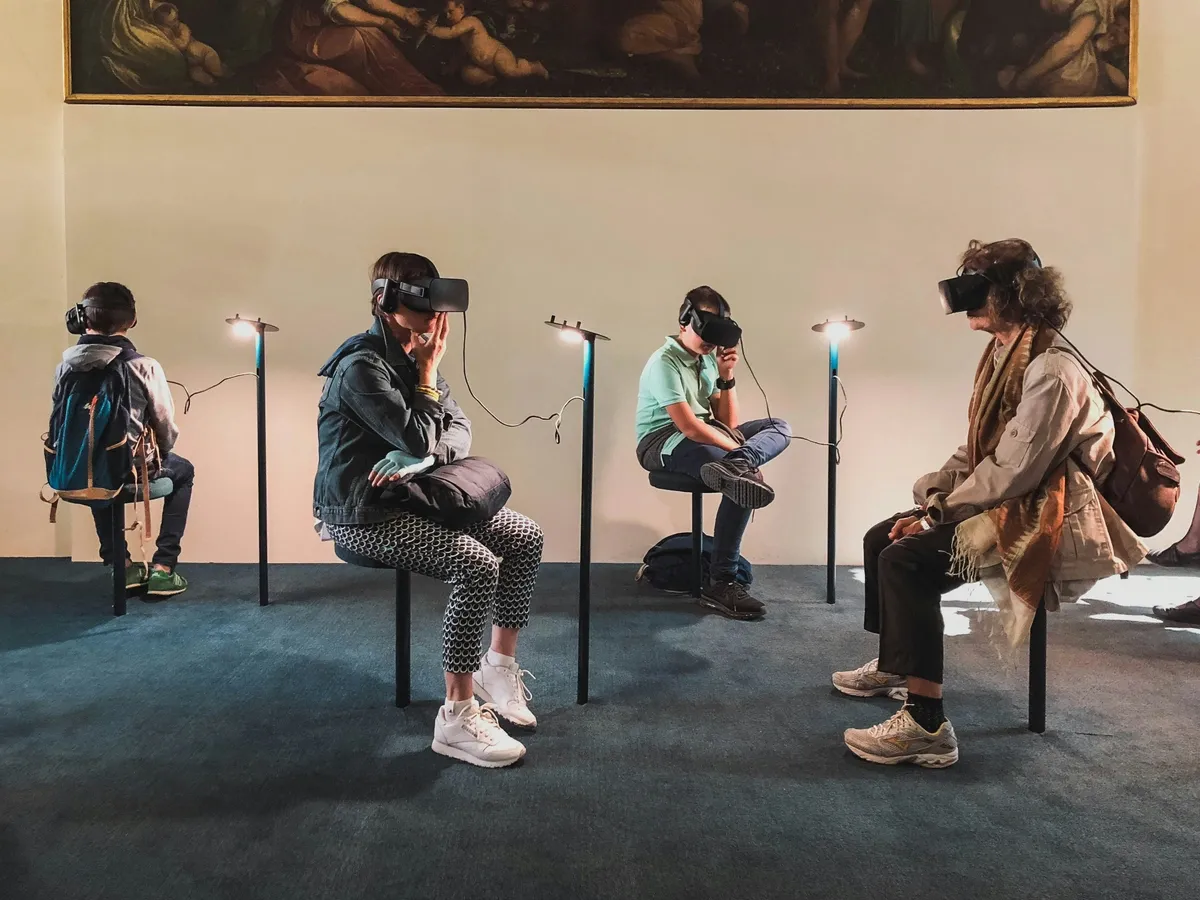
Embracing digital transformation is crucial for small to medium architecture firms seeking to stay competitive in today’s rapidly evolving industry. Emerging technologies like AI, VR, and cloud computing are revolutionizing design processes, enhancing collaboration, and driving operational efficiency. By leveraging these cutting-edge tools, architecture firms can optimize their workflows, improve client engagement, and achieve significant cost savings.
AI and Machine Learning in Architecture
Artificial Intelligence (AI) and Machine Learning (ML) are revolutionizing the architecture industry by enhancing design processes and operational efficiencies. These technologies enable architects to optimize building plans for sustainability and cost-efficiency, contributing to innovative and environmentally friendly design solutions. AI can assist in brainstorming and conceptualizing ideas, identifying patterns that inform efficient design decisions, and even generating smart city concepts (source).
AI tools streamline early-stage planning, improve architectural mapping, and optimize sketching. They can automate mundane design tasks such as generating floor plans from simple inputs and dynamically reorganizing layouts as walls and partitions are moved. This allows architects to focus on more creative and complex aspects of their projects (source).
For small to medium architecture firms, adopting AI and ML technologies can lead to significant benefits. These include simplifying complex processes, increasing efficiency, providing precision in design challenges, and promoting sustainability. As AI tools become more accessible and less expensive, smaller firms stand to gain a competitive advantage by integrating these technologies into their workflows (source).
AI also extends to predictive maintenance, analyzing data to generate new insights and solutions. This technology can limit downtime, maximize asset usage, and save capital in labor and materials, thereby extending the life of machines and assets (source). By embracing AI and ML, small to medium architecture firms can achieve increased efficiency and cost savings, positioning themselves for success in a digital future.
Virtual Reality (VR) and Augmented Reality (AR) for Enhanced Visualization
Virtual Reality (VR) and Augmented Reality (AR) technologies have been increasingly adopted in the architecture industry, reshaping how architects visualize concepts and communicate their ideas. VR provides a fully simulated environment, allowing architects to step into their designs, explore them from a first-person perspective, and gain a unique sense of scale, ambiance, and spatial experience (source). Conversely, AR combines digital overlays with the physical world, enabling architects to superimpose 3D models, textures, and annotations onto real-time camera views, enhancing the understanding of spatial relationships and design intent (source).
These technologies are transforming architecture by revolutionizing how professionals visualize and communicate their concepts. VR offers individualized experiences for clients, allowing them to explore and interact with the environment created by the architect, providing a richer and more immersive experience compared to conventional 2D presentations (source). AR enhances design visualization by superimposing computer-generated images onto the physical environment, allowing a better understanding of design elements such as lighting, material, and color. These interactive experiences improve client presentations by allowing clients to experience the design concept in real-time and in 3D, enhancing their understanding and satisfaction (source).
The integration of AR and VR in architecture significantly improves client engagement and design accuracy. These technologies offer immersive experiences that help clients visualize the final project more effectively, leading to better decision-making (source). By enabling real-time interaction and collaboration among architects and their partners, AR and VR improve communication, leading to better project outcomes. These technologies also enhance design accuracy by allowing architects to visualize their concepts in 3D, reducing errors, and improving construction efficiency (source). This streamlines the design process, reduces review and coordination time, and allows for testing of designs before construction, leading to greater project efficiency (source).
Cloud Computing and Collaboration Tools
Cloud computing has become an indispensable component of modern business operations, particularly for architecture firms. At its core, cloud computing enables users to access data, applications, and services over the internet rather than relying on local servers or personal devices. This technology ensures that all team members can work from the same up-to-date information, enhancing collaboration and streamlining operations (source).
For architecture firms, cloud-based collaboration tools are particularly valuable. These tools facilitate remote work by breaking down geographical barriers and allowing team members to collaborate in real-time, regardless of their physical location. Features such as instant messaging, video conferencing, and virtual meeting rooms foster a sense of connectivity and cohesion among team members, which is essential for maintaining a productive and collaborative work environment (source).
The adoption of cloud computing also significantly enhances team productivity. Cloud-based tools automate many tasks that were traditionally time-consuming and prone to human error. For example, tasks such as data backups, workflow enhancements, and process streamlining can now be automated, freeing up valuable time for more critical activities. Additionally, the ability to access documents and communication channels from anywhere allows employees to work in environments that best suit their needs, further driving productivity (source).
Cloud solutions also play a critical role in ensuring project continuity. They provide IT resilience by enabling businesses to quickly scale up or down as needed and by decentralizing data storage. This means that if one server fails, others can take over, ensuring that project work can continue without significant interruptions. This resilience is crucial for controlling costs, increasing efficiency, and reducing vulnerabilities, thereby ensuring that projects stay on track (source).
In conclusion, cloud computing and collaboration tools are more than just technological advancements; they are essential for small to medium architecture firms looking to enhance team productivity and ensure project continuity. By leveraging these tools, firms can achieve greater efficiency, flexibility, and resilience in their operations, positioning themselves for long-term success in an increasingly digital world.
Leveraging Technology for a Competitive Edge
In the rapidly evolving architecture industry, staying ahead of the curve requires embracing the latest technological trends. AI, VR, and cloud computing are not just buzzwords; they are transformative tools that can significantly enhance the way small to medium architecture firms operate.
Artificial Intelligence (AI) and Machine Learning (ML) are revolutionizing architectural design and operational efficiencies. These technologies enable firms to optimize building plans, automate mundane design tasks, and predict maintenance needs, thereby saving time and reducing costs. By adopting AI and ML, architecture firms can streamline complex processes, enhance precision in design, and promote sustainability, giving them a competitive edge.
Virtual Reality (VR) and Augmented Reality (AR) are reshaping design visualization and client engagement. These immersive technologies allow architects to present their ideas in 3D, providing clients with a more interactive and engaging experience. Enhanced visualization leads to better client understanding and satisfaction, while real-time interaction and collaboration improve design accuracy and project outcomes.
Cloud computing and collaboration tools have become indispensable for modern architecture firms. These technologies facilitate remote work, enhance team productivity, and ensure project continuity. By enabling real-time access to data and applications, cloud solutions allow teams to work more efficiently and flexibly, breaking down geographical barriers and fostering a collaborative work environment.
Minute7 seamlessly fits into this technological landscape by offering robust time tracking and expense reporting solutions. Integrating directly with QuickBooks, Minute7 ensures that architecture firms can efficiently manage their time and expenses, freeing up valuable resources to focus on design and innovation. With its user-friendly platform accessible from various devices, Minute7 supports architecture firms in optimizing their workflows and achieving operational excellence.
As small to medium architecture firms navigate the digital transformation journey, leveraging these advanced technologies, along with Minute7’s reliable solutions, will be crucial for achieving long-term success and staying competitive in the market.



